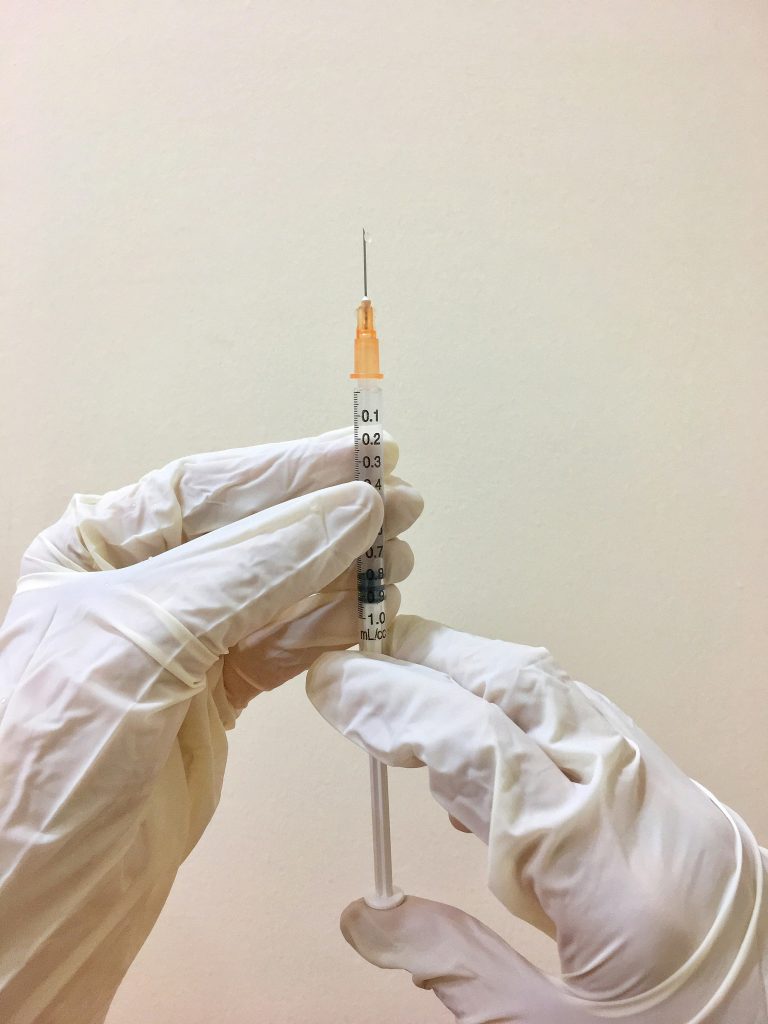Osteoarthritis, a degenerative joint disease, is the most common form of arthritis, affecting millions of people worldwide. Characterised by the gradual wear and tear of cartilage, it leads to pain, stiffness, and loss of joint movement. Osteoarthritis can have a profound impact on an individual’s quality of life, often limiting their ability to perform everyday activities.
In the ongoing quest to manage this debilitating condition, one treatment option’s gaining popularity. Corticosteroid injections – also sometimes called steroid injections – offer a promising avenue for alleviating the painful symptoms of osteoarthritis.
In this blog, we’ll delve into exactly what corticosteroid injections are, how they work, and their potential benefits. Plus, what you need to know before considering this treatment option. Our goal’s to provide you with comprehensive information so you can make a decision in consultation with your healthcare provider/physiotherapist.
Understanding Osteoarthritis
Osteoarthritis (OA) is a degenerative joint disease, often referred to as “wear and tear” arthritis. It occurs when the protective cartilage that cushions the ends of your bones gradually deteriorates over time. While it can damage any joint in your body, osteoarthritis most commonly affects joints in your hands, knees, hips, and spine.
Common symptoms of osteoarthritis include pain, stiffness, swelling, and decreased range of motion in the affected joints. These symptoms can vary in intensity from mild to severe and can significantly affect patients’ daily lives. Simple tasks such as walking, climbing stairs, opening jars, or even writing can become challenging due to pain and joint stiffness. Over time, OA can also lead to joint instability and deformity, further impacting an individual’s mobility and independence.

The Role of Corticosteroids in Treating Osteoarthritis
Corticosteroids, often referred to simply as steroids, are a type of medication that mimics the action of hormones produced naturally by our adrenal glands. They have strong anti-inflammatory properties, making them an effective treatment for various inflammatory conditions including osteoarthritis.
When injected directly into the affected joint, corticosteroids work by reducing inflammation, which in turn alleviates pain and swelling. They do this by suppressing the immune system’s response, limiting the production of substances that trigger inflammatory reactions. This reduction in inflammation can provide significant relief from osteoarthritis symptoms, improving joint function and enhancing the patient’s quality of life.
It’s important to remember that while corticosteroid injections can help manage the symptoms of osteoarthritis, they don’t cure the disease. Nor do they reverse the joint damage. In some instances, corticosteroid injections may offer fast pain relief, but could actually speed up degeneration over time. So, it’s important to weigh up all of the pros and cons, in consultation with a medical professional, before going ahead.
Typically, we use these kinds of injections as part of a comprehensive treatment plan that may also include physical therapy, lifestyle modifications, and other medications.
The Procedure of Corticosteroid Injections
If you qualify for corticosteroid injections and choose to proceed, medical professionals often perform this minimally invasive procedure in an outpatient setting.
Here’s a step-by-step breakdown of what to expect:
- Preparation: We’ll clean the skin over the joint with an antiseptic. To reduce discomfort, we might apply a local anesthesia to numb the area we are going to inject.
- Injection: Under the guidance of imaging technology like a fluoroscope or ultrasound, your physiotherapist carefully inserts a needle into the joint space. This ensures accurate delivery of the medication to the inflamed area.
- Medication Delivery: We inject a mixture of anaesthetic and corticosteroid into the joint. The anaesthetic provides immediate pain relief, while the corticosteroid works to reduce inflammation over the following days and weeks.
- Post-Injection Care: We might advise you to rest the joint for a short period. And apply ice post-injection to mitigate any temporary discomfort or swelling at the injection site.
It’s important to note that while some patients experience immediate relief after the procedure. Others may only notice the effect of the corticosteroid injection after a few days. Side effects are generally mild and may include temporary pain and swelling at the injection site.

Benefits of Corticosteroid Injections for Osteoarthritis
Corticosteroid injections can offer both immediate and long-term benefits for individuals suffering from osteoarthritis. The immediate benefit comes from the anaesthetic, which can provide quick pain relief. The corticosteroid, on the other hand, works over time to reduce inflammation, thereby decreasing pain and improving joint function.
While the duration of relief varies among individuals, some patients have reported pain relief lasting several weeks or even months. This can significantly improve the patient’s quality of life, enabling them to return to their daily activities with less discomfort.
Case studies and patient testimonials often highlight the transformative effect of these injections. Patients frequently report being able to walk longer distances, participate in physical activities, and lead a more active lifestyle post-treatment.
It’s important to remember that while corticosteroid injections can provide substantial relief from osteoarthritis symptoms, they’re typically most effective when combined with other treatment strategies such as physiotherapy and lifestyle modifications.
Risks and Side Effects
While corticosteroid injections can provide significant relief from osteoarthritis symptoms, they’re not without potential risks and side effects. Some of these include:
- Pain and swelling: These are the most common side effects, usually occurring at the injection site. They are generally temporary and subside over time.
- Cartilage and bone damage: Repeated injections can potentially lead to damage to the cartilage or death of nearby bone.
- Skin changes: Possible skin discoloration, thinning, and loss of colour in the skin have been reported.
- Blood sugar levels: Corticosteroid injections can temporarily increase blood sugar levels.
- Mood and hormonal changes: Some patients may experience mood changes or hormonal changes, particularly women.
People with certain health conditions such as diabetes, hypertension, or those with a compromised immune system should discuss potential risks with their healthcare provider before considering this treatment.
Other Treatment Options for Osteoarthritis
Corticosteroid injections are just one of many treatments available for osteoarthritis. Other options include:
- Physiotherapy: Exercises to strengthen muscles around the affected joint can help improve mobility and reduce pain.
- Lifestyle modifications: Weight loss, regular exercise, and use of assistive devices can help alleviate symptoms.
- Medications: Over-the-counter pain relievers and anti-inflammatory drugs can help manage pain and inflammation associated with osteoarthritis.
- Surgery: In severe cases, joint replacement surgery may be considered.
Typically, we use corticosteroid injections when other treatments fail to provide adequate relief, or we use them together with other treatments as part of a comprehensive treatment plan. You should discuss all available treatment options with a professional to find the best course of action for your specific situation. If you’re interested in this line of treatment, please contact the clinic for an initial assessment instead of booking online.
Osteoarthritis is a degenerative joint disease that can significantly impact a person’s quality of life. While there are various treatment options available, corticosteroid injections can provide both immediate and long-term relief for many individuals suffering from this condition.
These injections work by reducing inflammation in the affected joints, thereby alleviating pain and improving joint function. However, they do come with potential risks and side effects, and may not be suitable for everyone. It’s important to discuss all available treatment options with a healthcare professional to determine the best course of action for your specific situation.
If you think this treatment might be beneficial for you, don’t hesitate to contact us. W5 Physiotherapy, conveniently located in Ealing, West London, offers expert, tailored physiotherapy and rehabilitation services, including manual therapy, exercise prescription, shockwave therapy and ultrasound-guided injections. Our team of experienced physiotherapists are dedicated to helping you achieve your rehab and fitness goals.
If you’re ready to take the first step towards a more comfortable and active life, contact W5Physio today. We’re here to help you with fast, effective treatment for long-lasting results.






